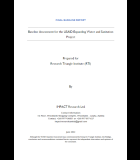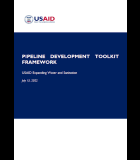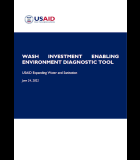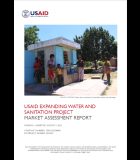Communications Support for Health (CSH)
The Government of the Republic of Zambia (GRZ), through the Ministry of Health (MOH), has committed to achieving Millennium Development Goal targets by improving the quality of health care services and providing greater and equitable access to health care for its people. To support these objectives, the United States Agency for International Development (USAID) is providing GRZ with technical assistance to strengthen national health communications activities.
Activity Description
The aim is for GRZ health communications activities—supported by the Communications Support for Health (CSH) project—to translate into increased, sustainable, local capacity, and positive behavior change that reinforces GRZ efforts in four focal areas: human immunodeficiency virus/acquired immune deficiency syndrome (HIV/AIDS); malaria; family planning/reproductive health (FP/RH); and maternal, newborn, and child health (MNCH), including nutrition, which is an integral part of MNCH.
CSH operates primarily at the national level, providing GRZ with technical assistance in the development, implementation, and evaluation of health communications activities. These activities have to be done consistently, with a focus on capacity building and transfer of skills. In the context of CSH, GRZ refers to three primary agencies—MOH, the National Malaria Control Centre (NMCC), and the National HIV/AIDS/STI/TB Council (NAC). The CSH project also worked with and supported other USAID partner programs with behavior change communications (BCC) to improve message effectiveness, consistency, and efficiency. CSH provided direct support to GRZ in the planning, design, implementation, and monitoring and evaluation (M&E) of communications campaigns and activities.
Expected Outcomes
• National health communications campaigns strengthened.
• GRZ use of evidence-based health communications approaches increased.
• Local capacity to support sustained implementation of IEC/BCC activities strengthened.
• Coordination of IEC/BCC activities between USAID projects increased.
Actual Outcomes
• CSH empowered 528 government and civil-society staff members as well as 32 national and subnational institutions with the tools and knowledge necessary to use effective communications to enact changes in population-level health trends across the nation
• The Safe Love campaign reached every single district in Zambia and more than 3 million households worldwide. In Zambia, the campaign achieved immense population exposure rates: 87 percent of Zambians were exposed to any media channel, 69 percent were exposed to Safe Love via television, and 75 percent were exposed to the campaign via radio. This translated into measurable shifts in behavior for those highly exposed to a campaign, including a 14-percentage-point increase in condom acquisition in past 6 months, etc.
• Trained 350 Change Champions to implement regular community discussions with pregnant women and their partners on the importance of the healthy motherhood behavior practices illustrated by the pregnancy care planner.
• In total, CSH worked with five CSOs to implement the Champion Communities approach in 131 communities across eight districts. The project reached more than 40,000 people, including almost 10,000 children under the age of five.





